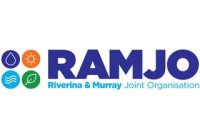Understanding the economic role of Riverina and Murray Joint Organisation provides a framework for understanding what policy responses and investment may be appropriate to support the growth of businesses and maintenance of a vibrant economy in the future.
The charts and table below give a broad overview of the role and function of your economy. It helps answer questions such as:
- How much of the Riverina and Murray Region's economy is driven by meeting the local population needs?
- What proportion of jobs in the area are in goods production or selling of products?
- In which broad sectors are the key strengths of the local economy?
- What contribution do business services make in your area and is it growing?
- Is there a presence of local, state and federal government workers in in the area?
Once you have developed a broad picture of your economy, you can then drill down further with all the detail here.
Current area:

| Employment composition | ||||||
|---|---|---|---|---|---|---|
| Riverina and Murray Region | 2023 | 2017 | 2012 | |||
| Industry | number | % | number | % | number | % |
| Agriculture, forestry and fishing | 8,374 | 10.2 | 8,553 | 11.9 | 8,010 | 11.6 |
| Mining | 97 | 0.1 | 86 | 0.1 | 96 | 0.1 |
| Goods related | 32,107 | 39.0 | 27,635 | 38.5 | 28,001 | 40.5 |
| Household services | 29,417 | 35.7 | 24,427 | 34.0 | 21,930 | 31.7 |
| Business services | 7,664 | 9.3 | 7,015 | 9.8 | 6,695 | 9.7 |
| Public administration and safety | 4,655 | 5.7 | 4,026 | 5.6 | 4,343 | 6.3 |
| Total Industries | 82,314 | 100.0 | 71,742 | 100.0 | 69,075 | 100.0 |
Source: National Institute of Economic and Industry Research (NIEIR) ©2024. ©2023. Compiled and presented in economy.id by .id (informed decisions). Data are based on a 2020-21 price base for all years. NIEIR-ID data are inflation adjusted each year to allow direct comparison, and annual data releases adjust previous years’ figures to a new base year.Learn more. Please refer to specific data notes for more information | ||||||
